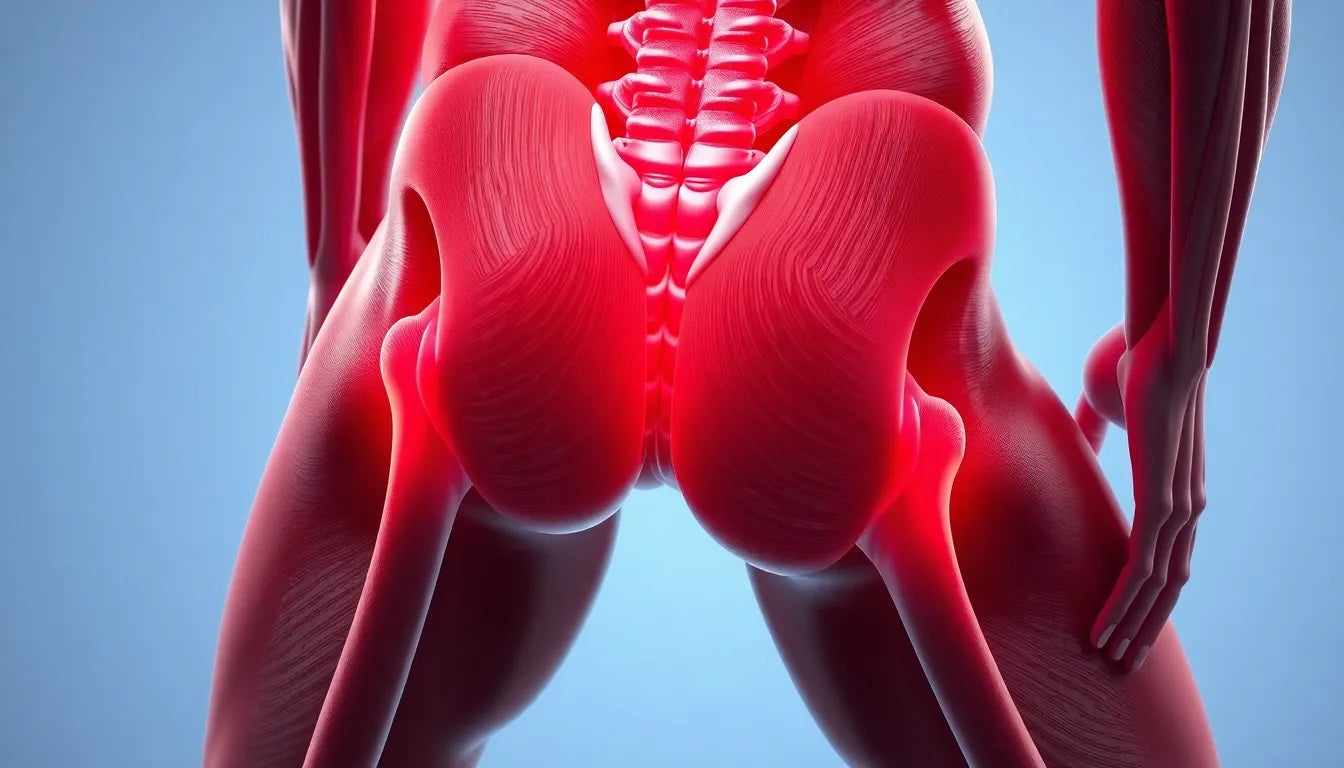Understanding heel spurs is essential for anyone experiencing persistent foot pain, especially if it affects daily activities like walking or standing. Heel spurs are bony growths that develop on the heel bone, often associated with plantar fasciitis, a condition where the plantar fascia, a thick band of tissue that runs across the bottom of your foot, becomes inflamed. This inflammation can lead to significant discomfort and pain, particularly when taking the first steps in the morning or after sitting for long periods.
While heel spurs themselves may not always cause pain, they often accompany plantar fasciitis, which is a major source of foot discomfort. This combination can severely impact your mobility and quality of life, making it difficult to engage in everyday activities without experiencing pain.
The importance of exercise for heel spurs
Targeted exercises play a crucial role in alleviating the pain associated with heel spurs and preventing further complications. By focusing on strengthening and stretching the muscles and tissues around the heel, these exercises can help reduce inflammation and improve overall foot function. Consistent practice of these exercises can lead to significant improvements in foot health, enabling you to regain comfort and mobility.
Incorporating a structured exercise routine into your daily life can be a game-changer for managing heel spur pain. Not only do these exercises help alleviate current symptoms, but they also contribute to the long-term health of your feet, preventing future issues. Strengthening the muscles in your feet and improving flexibility can provide the support your feet need to handle daily activities without discomfort.
Are you tired of heel pain holding you back?
If you're weary of heel pain dictating your day-to-day life, it's time to explore effective exercises that can help you regain your comfort and mobility. By focusing on specific exercises designed to target the underlying causes of heel spur-related pain, you can take control of your foot health and enjoy a more active lifestyle.
Whether you're dealing with the sharp, stabbing pain typical of plantar fasciitis or the chronic discomfort associated with heel spurs, implementing a routine of targeted foot exercises can make a substantial difference. These exercises not only address the immediate symptoms but also work towards enhancing the overall strength and flexibility of your feet, paving the way for a pain-free future.
In the following sections, we'll delve deeper into specific exercises that can help alleviate heel spur pain, improve foot function, and enhance your overall quality of life. By committing to these exercises, you can unlock the relief you need and return to the activities you love.
Effective exercises for heel spur relief
Addressing heel spur pain effectively requires a combination of stretching, strengthening, and mobility exercises tailored to alleviate discomfort and enhance foot function. These exercises not only target the immediate symptoms but also work towards preventing future complications. Here, we delve into specific exercises designed to offer relief from heel spur pain and improve overall foot health.
Plantar fascia stretch for flexibility
The plantar fascia stretch is a fundamental exercise aimed at relieving tension and enhancing flexibility in the foot. This stretch targets the plantar fascia, which often becomes tight and inflamed in individuals with heel spurs.
Instructions:
- Sit comfortably with one leg crossed over the other.
- Using a towel or your hand, gently pull your toes toward your shin.
- Hold this position for 10 seconds and repeat several times throughout the day.
Regularly performing this stretch can help reduce pain and improve the overall flexibility of the foot, making daily activities more manageable.
Massage and foot sole mobility
Self-massage is an effective way to enhance circulation and reduce tension in the foot, which can be particularly beneficial for those suffering from heel spurs. This practice helps in loosening tight tissues and promoting relaxation.
Instructions:
- Place a tennis or golf ball under your foot.
- Gently roll the ball in circular or back-and-forth motions for about 1 minute daily.
Incorporating this massage into your routine can significantly improve blood flow and alleviate discomfort, providing a soothing effect on the affected area.
Strengthening foot muscles
Strengthening the muscles in your feet is crucial for supporting the arch and reducing symptoms associated with heel spurs. These exercises aim to build resilience and stability in the foot.
Instructions:
- Towel Grab: Place a towel on the floor and use your toes to scrunch it toward you.
- Toe Raises: Stand and lift your heels, balancing on your toes, then slowly lower. Perform in sets of repetitions.
By regularly engaging in these strengthening exercises, you can enhance the structural integrity of your feet, providing better support and reducing pain over time.
Achilles stretch and ankle mobility
Stretching the Achilles tendon and improving ankle mobility are essential for overall foot health. These exercises help in maintaining flexibility and preventing stiffness.
Instructions:
- Stand facing a wall with one foot forward and knee bent, the other leg straight behind.
- Press your heel into the ground and stretch the back of your leg.
This stretch not only aids in relieving tension in the Achilles tendon but also contributes to better ankle mobility, which is vital for maintaining a healthy gait.
Balance and proprioceptive training
Improving balance and proprioception is key to preventing injuries and supporting foot stability. These exercises are designed to enhance your body's awareness and control.
Instructions:
- Stand on one leg on a soft surface, such as a folded towel or foam pad.
- Hold the position for 30 seconds, then switch legs.
By incorporating balance training into your routine, you can improve your proprioceptive skills, which are crucial for maintaining stability and preventing falls.
By diligently practicing these exercises, you can achieve substantial relief from heel spur pain and enhance your foot function. Remember, consistency is key, and it's important to integrate these exercises into your daily routine for optimal results.
continuing your journey to heel spur relief
As you embark on your journey to alleviate heel spur pain, it's crucial to remember that consistency and patience are your allies. The exercises outlined in the previous sections are designed to gradually improve the condition of your feet, enhancing both comfort and mobility. By tracking your progress over weeks and months, you can gain valuable insights into how your body is responding to these exercises.

Lumbar support belt
Provides lower back support, relief and stabilisation for daily activities and pain management.
It's important to set realistic expectations. While some individuals may notice improvements within a few weeks, the full benefits of these exercises typically manifest over a longer period, often 3 to 6 months. This timeline allows for the necessary adaptations in tendons and muscles, leading to lasting relief from heel spur-related discomfort.
Maintaining a regular exercise routine is essential. Consistency is the key to success, as it allows your body to adapt and strengthen over time. Consider keeping a journal to document your progress, noting any changes in pain levels, mobility, and overall foot health. This practice can serve as a motivational tool, helping you stay committed to your routine.
In addition to exercises, consider complementing your routine with other supportive measures. Proper footwear with adequate cushioning and arch support can significantly reduce strain on your feet. Additionally, using insoles designed for heel spurs can provide extra comfort and support during daily activities.
Remember, while mild discomfort during exercises is normal, significant pain should not be ignored. If you experience persistent or worsening pain, it's advisable to consult a healthcare professional. They can provide personalized guidance and explore additional treatment options if necessary.
frequently asked questions
How long before I see results from these exercises?
While some relief may be felt within a few weeks, consistent practice over 3-6 months is necessary for lasting results.
Can these exercises be done at home without equipment?
Yes, most exercises require minimal to no equipment, making them easy to perform at home.
Should I continue these exercises if I experience pain?
Mild discomfort is normal, but if you experience significant pain, it's advisable to consult a healthcare professional.
Are there any other treatments that complement these exercises?
Yes, using supportive insoles, proper footwear, and considering professional massage therapy can enhance results.
When should I seek professional help?
If pain persists despite regular exercise and self-care, consult a physiotherapist or healthcare provider for further evaluation.
Kilder
- Zency. ”Øvelser til hælspore.” Zency.
- Hasselager Fysioterapi. ”Træningsprogram til hælsporer.” Hasselager Fysioterapi.
- LøbeShop. ”Hælspore: Sådan behandler du den.” LøbeShop.
- Iform. ”Sådan behandler du hælspore.” Iform.
- Fysio.dk. ”Træning afhjælper smerter ved hælspore.” Fysio.dk.
- YouTube. ”Hælspore øvelser.” YouTube.
- Aarhus Osteopati. ”Behandling af hælspore.” Aarhus Osteopati.
- Hospitalsenhed Midt. ”Behandling af hælspore (fasciitis plantaris).” Hospitalsenhed Midt.


















